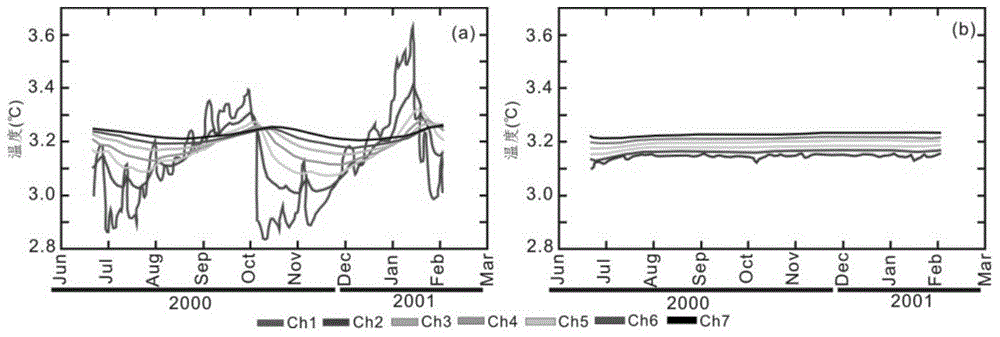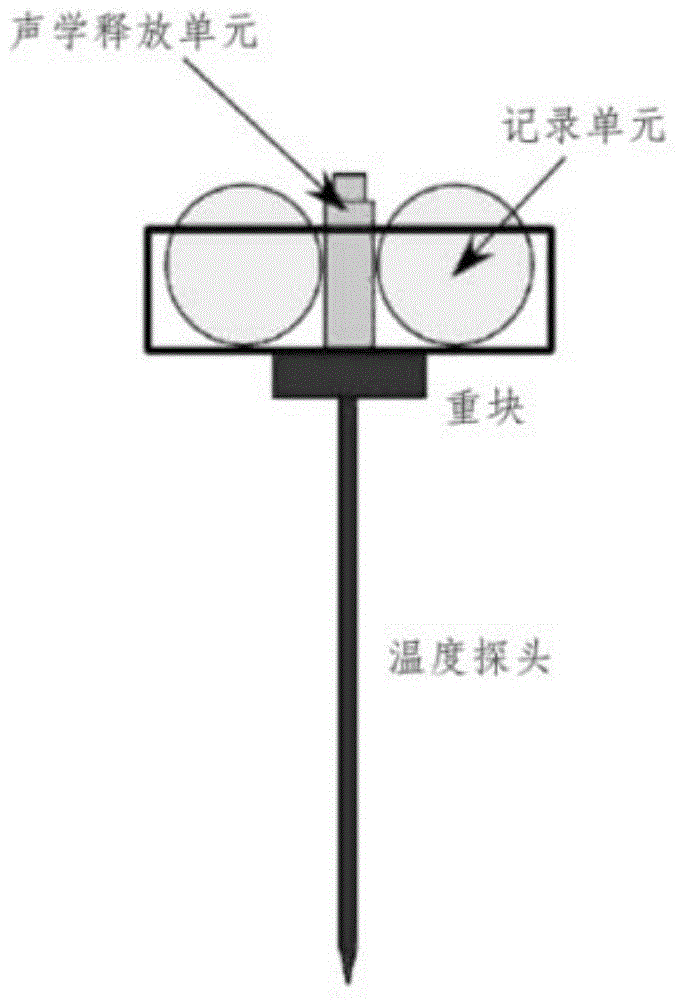Seabed heat flow long-term observation probe based on underwater robot platform
An underwater robot and seabed heat flow technology, applied in the field of temperature detection, can solve problems such as reduced temperature sensitivity, difficult seabed operations for ROVs, limited carrying capacity, etc., to eliminate the influence of temperature fluctuations, reliable background geothermal parameters, and easy replacement and maintenance effects
- Summary
- Abstract
- Description
- Claims
- Application Information
AI Technical Summary
Problems solved by technology
Method used
Image
Examples
Embodiment approach
[0069] ① Power module 231 . The electrical characteristics of ordinary electronic components are that the lower the power supply voltage (within a reasonable range), the lower the current consumption, so providing a lower power supply voltage for the circuit helps to save power. After comprehensive consideration, the circuit uses a working voltage of 3.0V, which not only meets the power requirements of each device, but also ensures the signal-to-noise ratio of the analog signal as much as possible.
[0070] Under the condition that the battery 24 has the same volume, the battery with a lower rated output voltage has a larger capacity and thus has a longer service life. Therefore, this design selects a lithium-ion battery with an output voltage of 3.7V, and its nominal capacity is 800mAh. The actual discharge capacity is about 600mAh, and the lithium-ion battery is converted to a working voltage of 3.0V by the power module 231.
[0071] In the actual long-term observation of s...
PUM
| Property | Measurement | Unit |
|---|---|---|
| Outer diameter | aaaaa | aaaaa |
| Length | aaaaa | aaaaa |
Abstract
Description
Claims
Application Information
 Login to View More
Login to View More - R&D
- Intellectual Property
- Life Sciences
- Materials
- Tech Scout
- Unparalleled Data Quality
- Higher Quality Content
- 60% Fewer Hallucinations
Browse by: Latest US Patents, China's latest patents, Technical Efficacy Thesaurus, Application Domain, Technology Topic, Popular Technical Reports.
© 2025 PatSnap. All rights reserved.Legal|Privacy policy|Modern Slavery Act Transparency Statement|Sitemap|About US| Contact US: help@patsnap.com



